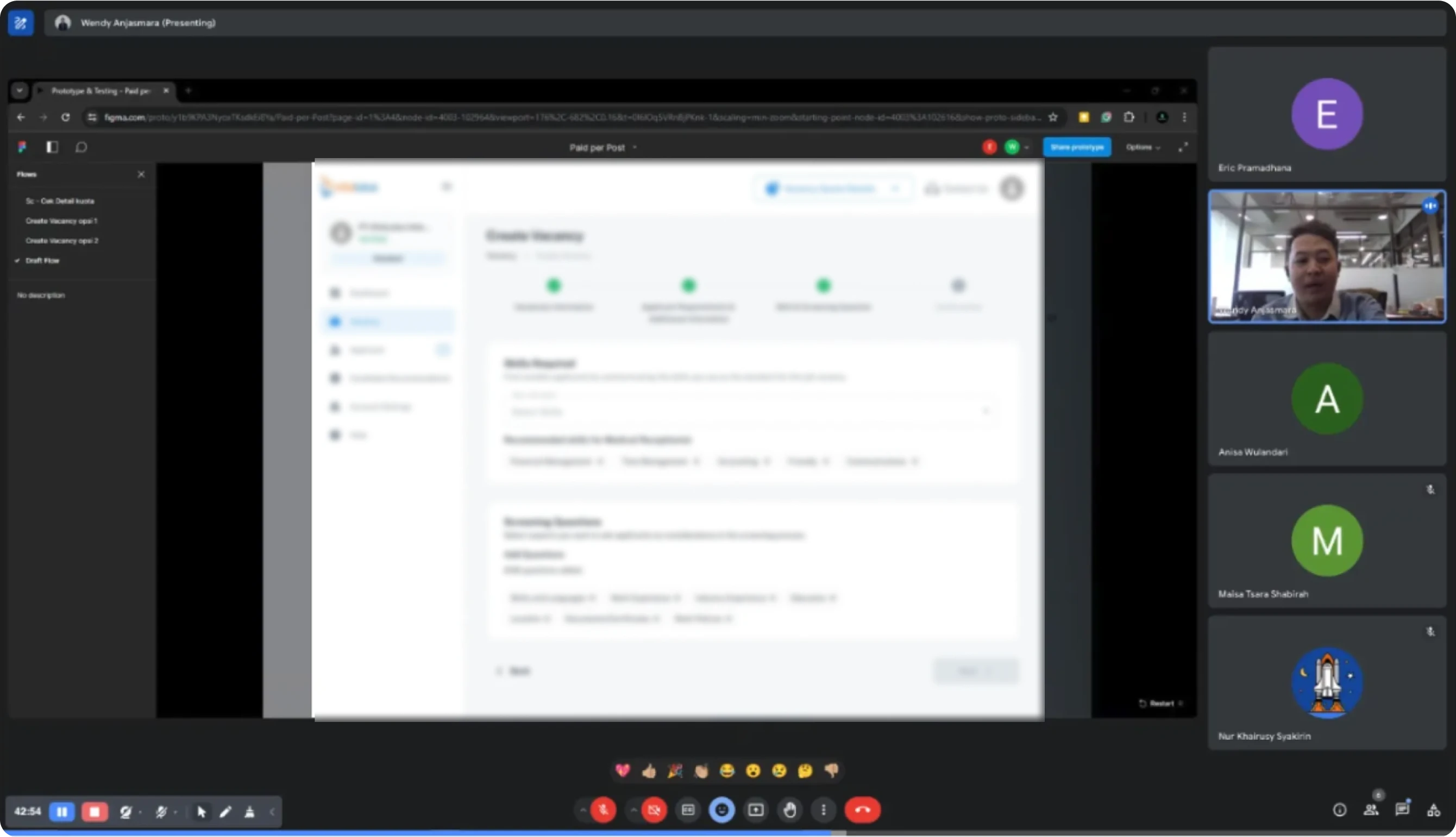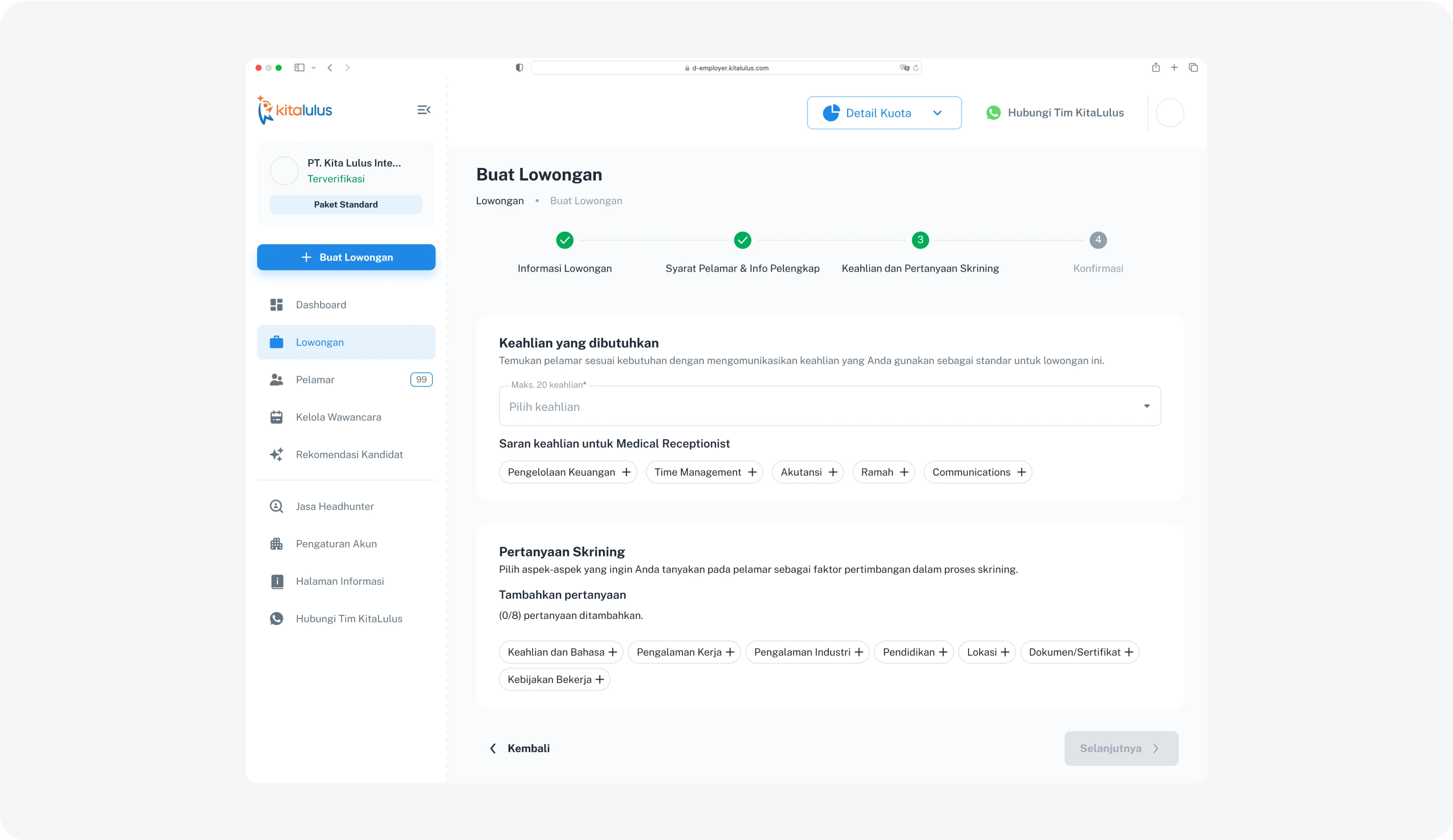Summary & Impact
KitaLulus, Indonesia’s leading job platform with 11M+ job seekers and 100K companies.
Before improvement: 10.12%
Adoption: % user using screening question after improvement: 57.63%
Background & Context
Job Seekers feels frustrated on screening questions
- Job Seeker does not make sense to be asked (not relevant).
- Job Seeker does not know which answer is right.
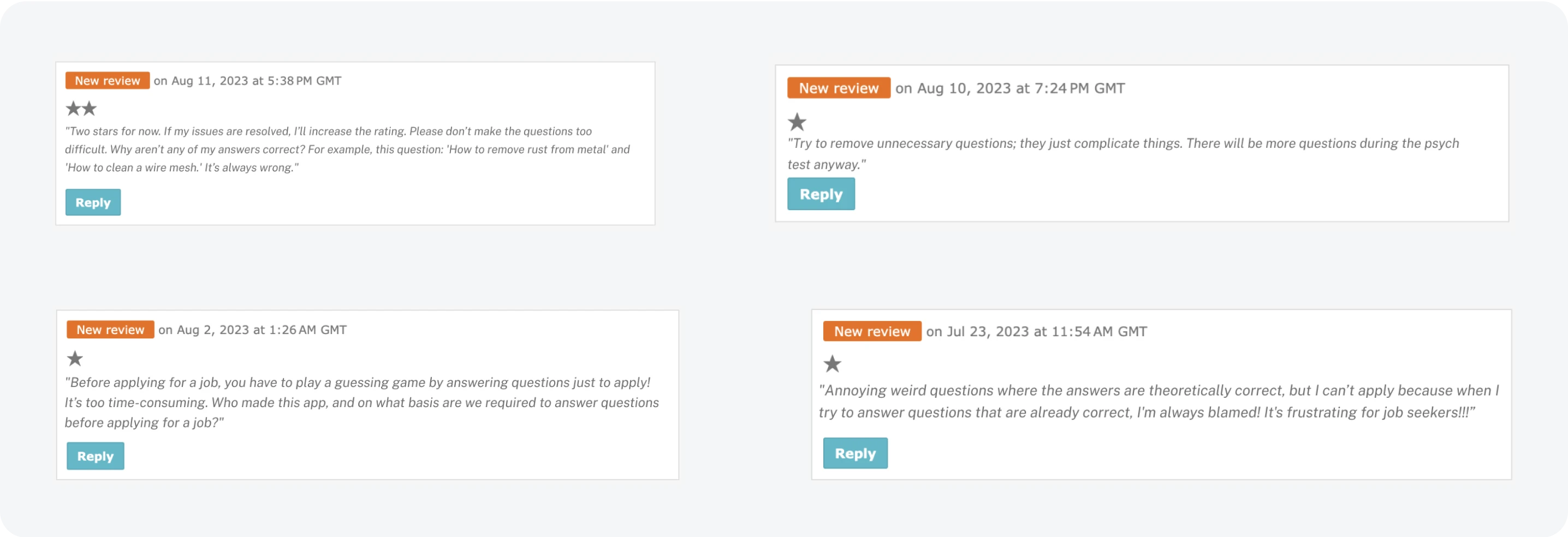
Research
Understanding the Root Cause
We started by investigating where irrelevant questions were coming from. The source was the Employer Dashboard—a web platform where employers manage job postings and applicants. This meant our research had to focus on the employer side rather than job seekers.
Problem #1
Users may enter skills that are not aligned with the job role
The root problem begins here, where there is no clear correlation between the job role or requirements and the screening questions. As a result, users may add questions that are not aligned with the actual needs of the job vacancy.
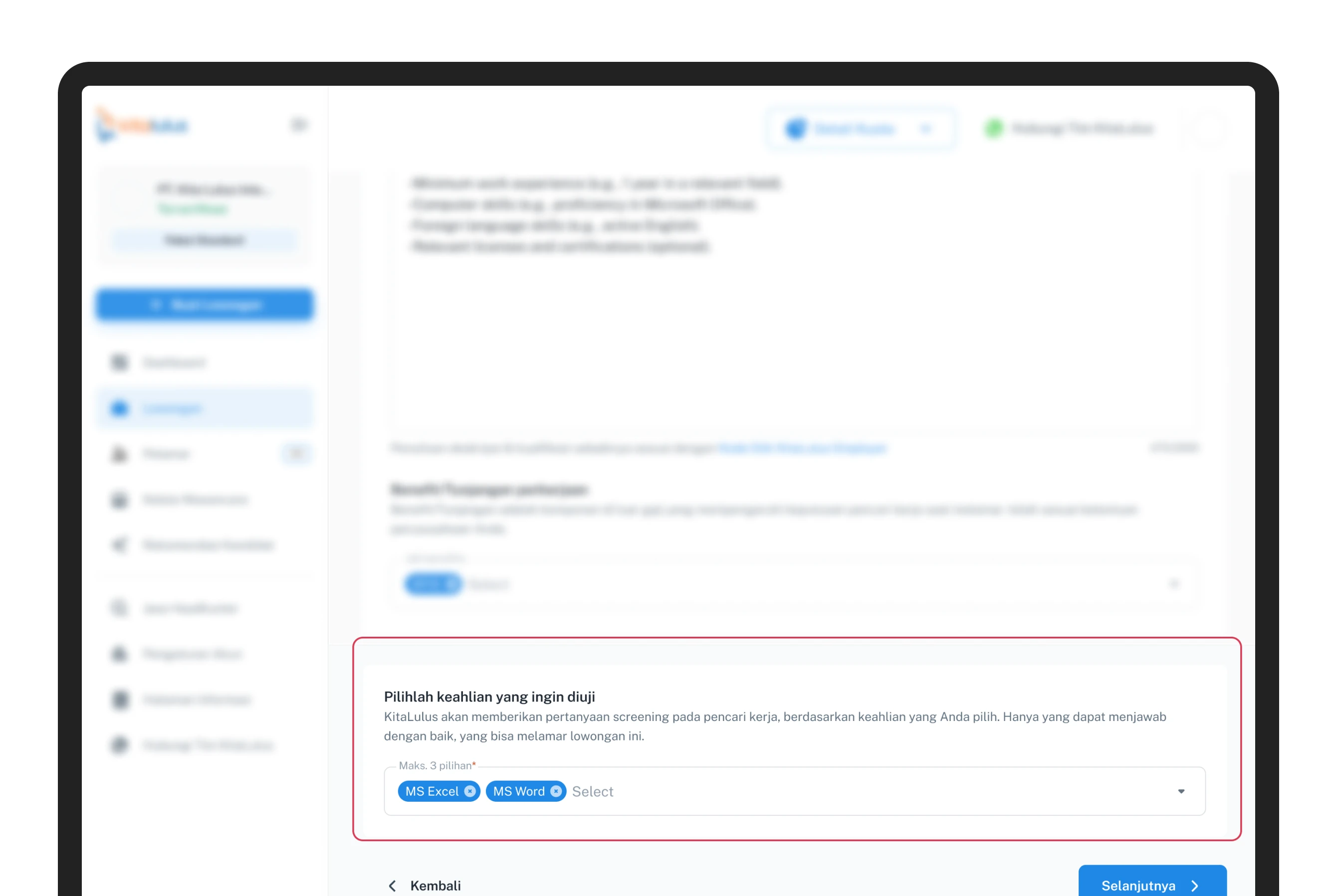
Problem #2
Required Screening Question
Employers are required to fill in the skills they want to test, but many of them actually do not want to include skill-based questions. As a result, there is a high chance that employers will enter skills incorrectly or randomly, simply to complete the form, rather than because the information is truly relevant.
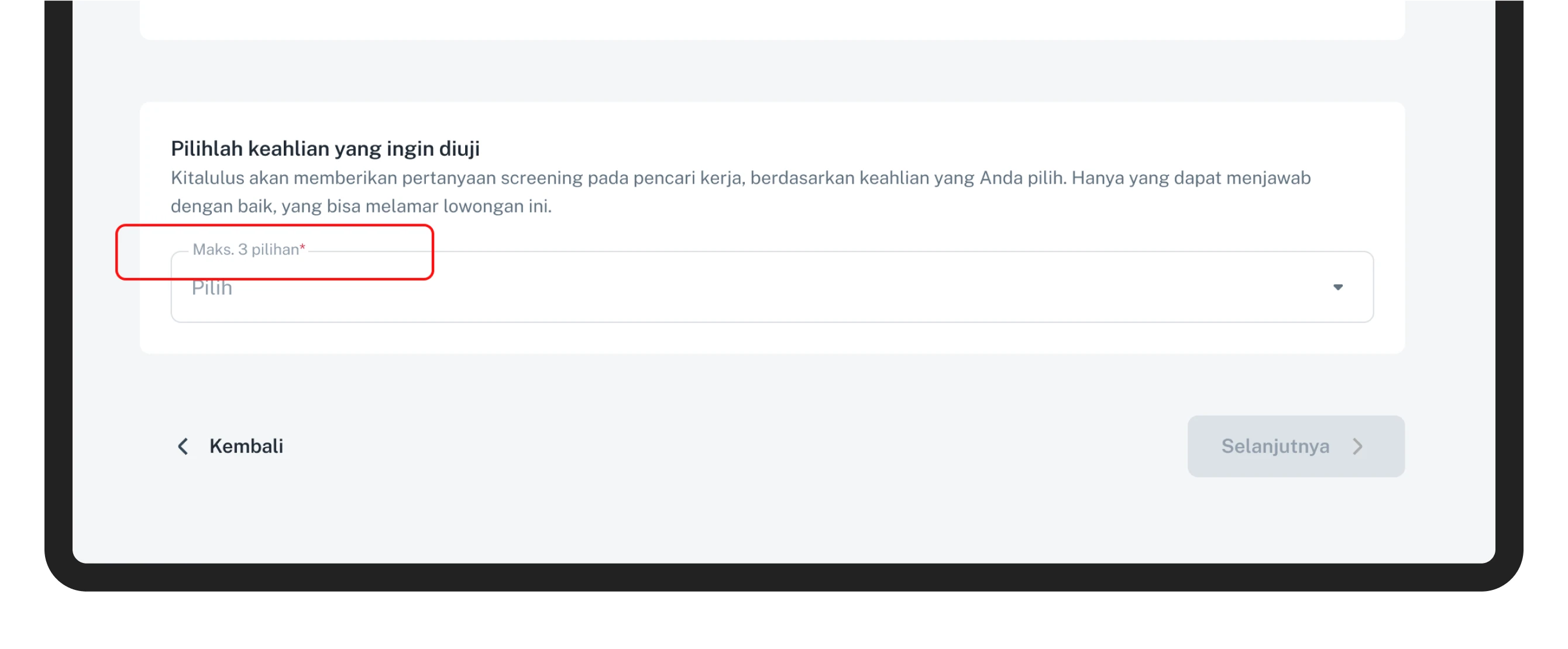
Problem #3
Only Skills
Employers emphasized that screening should not focus solely on skills. To properly filter candidates, they also need to include other criteria such as work experience, location, education, and more
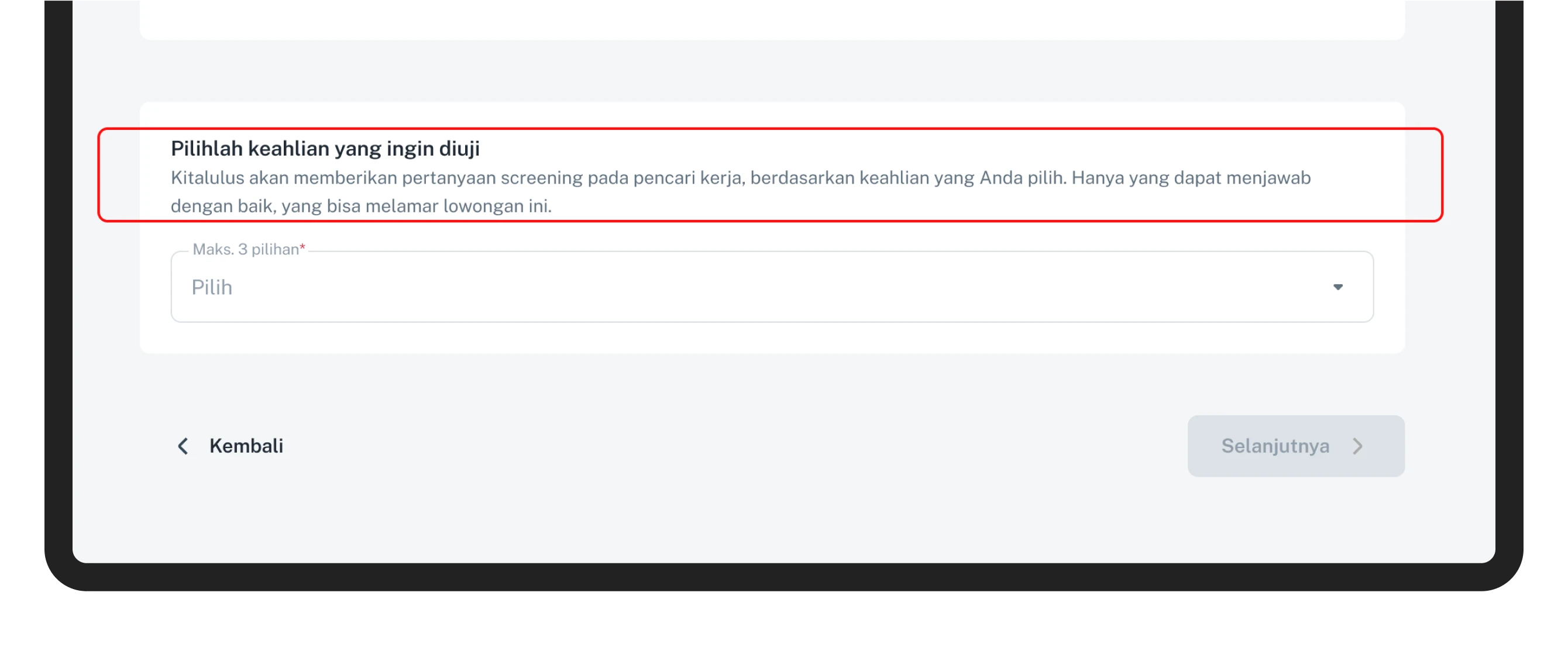
Problem #4
No Skills Suggestions
There is no guidance or recommendations on the skills required for a specific role.
Problem #5
No Question Preview
Users are unsure about the type of questions that will be asked to job seekers.
How-Might We
Brainstorming & Solutions
We mapped pain points against competitor benchmarks to see what was missing from our experience. Most of the improvements our users requested — flexibility, customization, and more question options — are already adopted by other platforms.
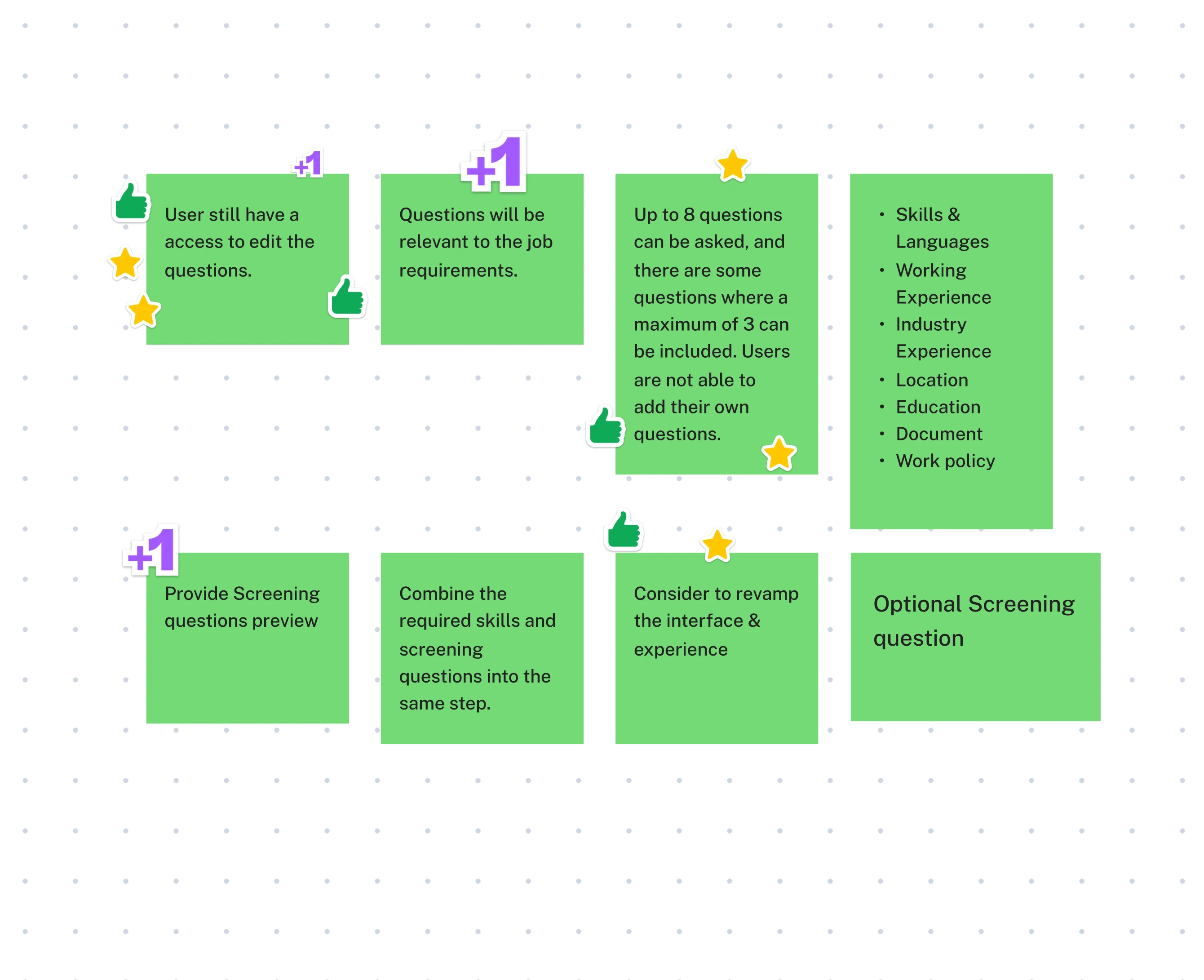
Final Design
Design Decisions
We improved several design elements based on the solutions implemented.
1. Skills and Screening Question as a new step

Moved screening questions into their own step (step #3) to ensure focus.
2. Skill: Improving The Form

This design provides employers with clear instructions, skill suggestions, and the flexibility to choose up to 20 relevant skills. It helps ensure that selected skills align more accurately with the job role.
3. Improve Screening Questions Form Experience
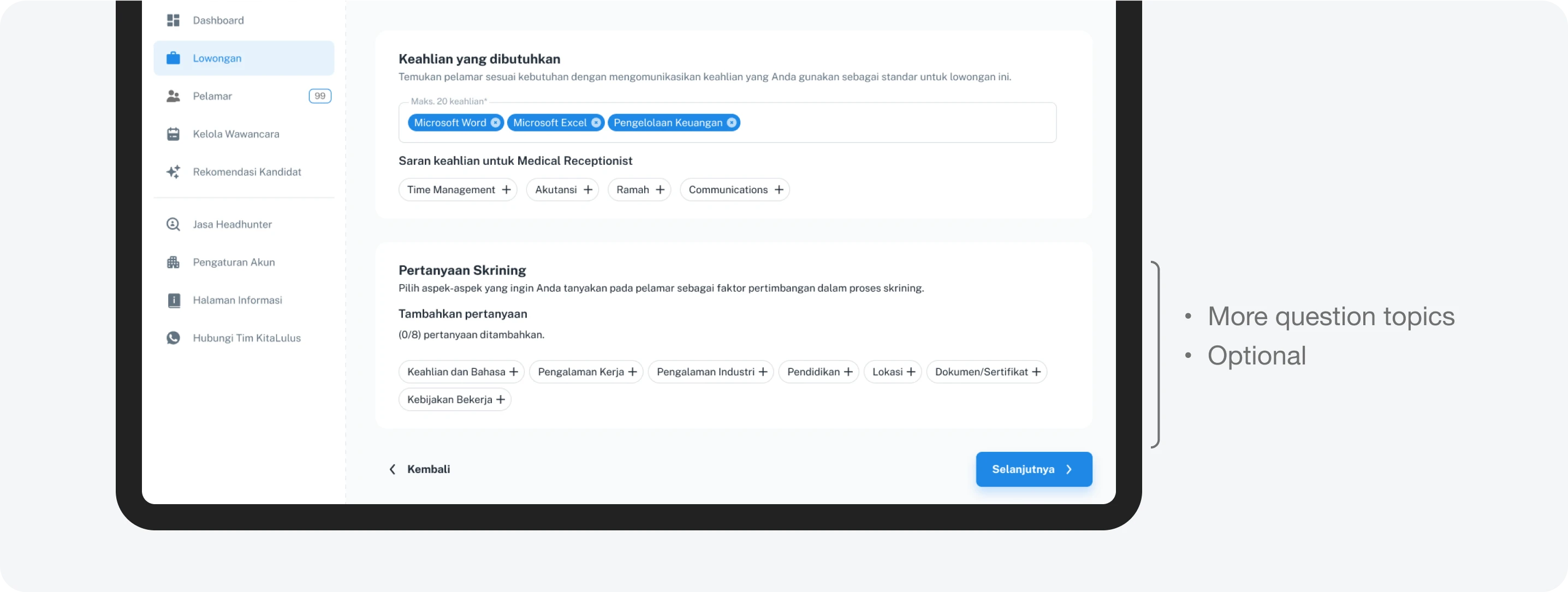
Add more question and set as optional if the user no need to set screening questions.
_Step.webp)
To ensure full alignment with the job requirements and completely eliminate any mismatch, all screening questions are directly derived from the defined requirements. Therefore, the screening step is placed at the end of the process, once all essential data has been collected.
_Step.webp)
Users are aware of the questions that will be asked to job seekers. However, they are currently restricted from editing or adding questions to prevent any out-of-context or legally non-compliant inquiries.
Validation & Testing
Get a Feedback
We conducted usability testing sessions with multiple participants, including Human Resources staff from our own company. The goal was to validate both the flow and the UI design of the screening questions feature.
